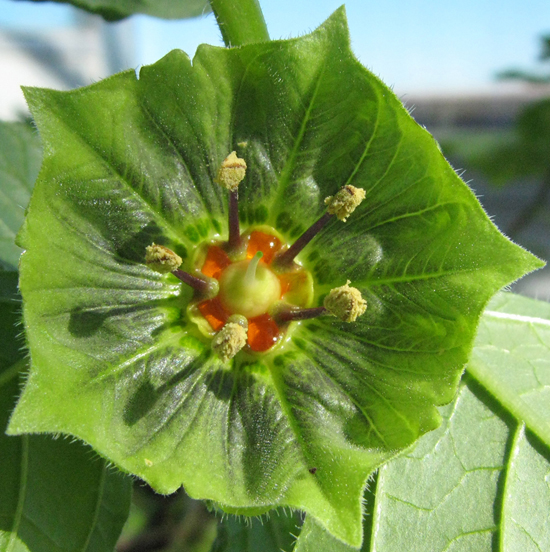
Convergent / Parallel Evolution within the genus Jaltomata |
revised 18 Dec 2018 |
Link to Jaltomata homepage |
The information on this page may be cited as a communication with professor Thomas Mione, Central Connecticut State University, Biology Department, Copernicus Hall, 1615 Stanley Street, New Britain, CT 06050-4010 USA, and Segundo Leiva G., Universidad Privada Antenor Orrego, Av. América Sur 3145, Casilla postal 1075, Trujillo, Peru |
 |
Above: Within the genus Jaltomata different lineages have evolved different structures that partition nectar into five troughs. Why partition nectar into troughs? Partitioning nectar into troughs: 1) must reduce evaporation (see next paragraph), 2) must contribute positively to the intensity of the visual signal to pollinators given that the nectar is colored, and 3) may encourage floral visitors to move around within the flower to continue to remove nectar, increasing the chances of contact between the anthers/stigma and the visitor. Above Right: Prior to the naming of J. calliantha it was refered to as J."hummingbird" (Miller et al. 2011) because Segundo Leiva and I had seen hummingbirds visiting the flowers in Peru. |
Successful colonization from the Andes to the Peruvian lomas, a coastal desert habitat that receives all of its moisture as fog, occurred more than once in this genus. Left: Jaltomata truxillana Left photo is by Segundo Leiva G., right photo was provided by Graciela Vilcapoma S. and Arturo Granda P. |
||
under construction |
The following suite of characteristics seems to have evolved more than once: Flowers solitary, corolla purple and relatively large, style decreasing gradually in diameter proximal to distal, the stigma punctiform (not capitate). Left: J. andersonii, clade 3d in Miller et al. 2011). |
under construction |
In the genus Jaltomata, green fruits have evolved more than once Left: J. chihuahensis, units along bottom are mm, photo by Thomas Mione Right: J. quipuscoae, photo by Victor quipuscoa. These two species are not closely related within the genus, and are classified in two different sections of the genus: J. chihuahenisis in section Jaltomata, and J. quipuscoae in section Modillonia. |
||
Link to the only Jaltomata species of the Galápagos, J. werffii |
In the genus Jaltomata colonization of oceanic islands has occurred more than once. |
Link to the only Jaltomata species of the Greater Antilles, J. antillana |
| In the genus Jaltomata, connivent stamens (connivent anthers) seem to have evolved more than once. |
Footnote 1. J. quipuscoa was not not included in Miller et al. 2011, but if included would be in the J. aspera, J. calliantha (J. "hummingbird") clade: only these three species have a corona.